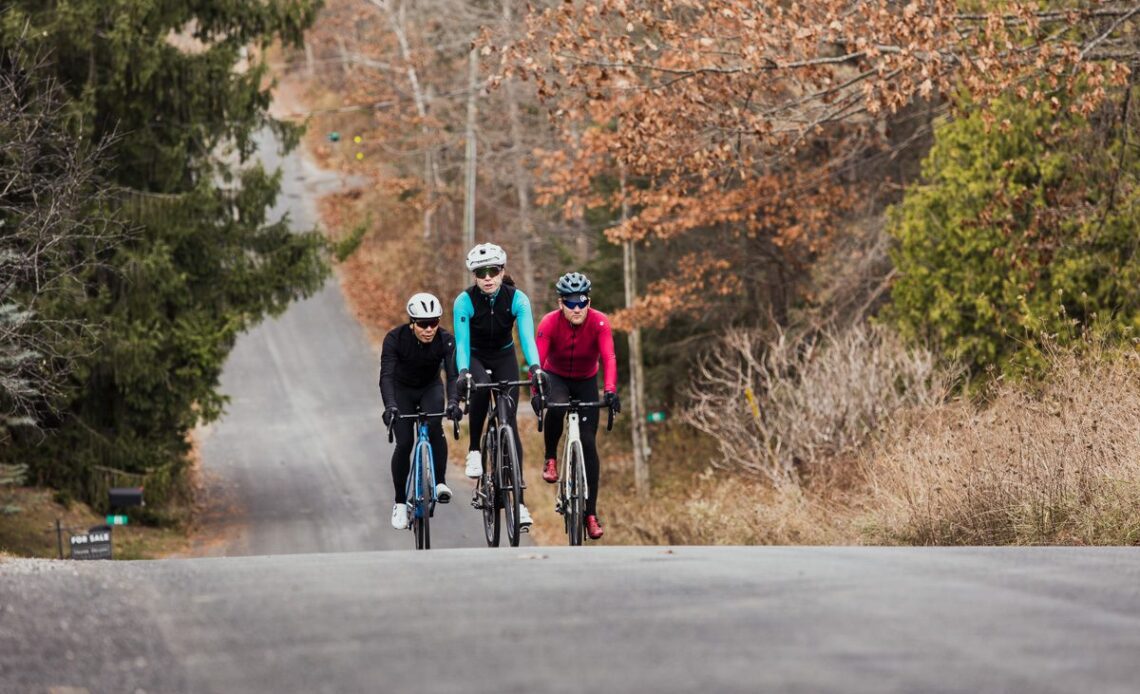I’m a morning guy. I always have to do my ride first thing–whether I am going to the office or not. I am not the kind of guy who waits “until it’s warmer.” So that means I need to be ready to go when it may be a bit chillier. If I leave the house at 8 a.m., and it’s 8 C, it’s almost certainly going to be several degrees warmer a few hours later.
In those temps, the ideal outfit is a long sleeve jersey and vest on top, with bibs and leg warmers. A cap is also useful for those temps, giving just a bit of extra warmth, yet easily stowed when it warms up. A buff or bandana is also an easy hack. Start your ride with a cycling cap and buff, once it gets a little warmer, you can remove them and you won’t risk overheating. Just like a vest, it’s another thing that you can throw in your backpocket if you get cold again. If you live in a hilly or mountainous area, a cap and vest are a must not only in the spring, but the summer too. You will find yourself removing the vest and cap as you climb, unzipping your long sleeve jersey–but by the top you’ll be sweaty, just in time for the descent to chill you. By throwing the vest and cap back on for the descent, it will prevent you from shivering. By using leg warmers with your shorts, you also have more versatility than a pair of bib tights. If it warms up midday, you’ll be very uncomfortable wearing big tights. Being able to take off the leg warmers adds versatility for an enjoyable ride.
Base layer
A proper base layer can make a big difference in comfort. Wicking away moisture when you might be wearing both a jersey or jacket, as well as a vest, is crucial to staying dry and comfortable. By varying the baselayer, the rest of your outfit can stay pretty much the same throughout most conditions you are likely to encounter during the spring and fall. The goal is to ensure that you stay warm, but not overheat.
The first decision is between a short sleeve or long. If the temperature is over 12 when you start, you may want to stick with a short sleeve base layer under your long-sleeve jersey and vest. If it’s chillier, stick with the longer sleeve. Remember, even if you heat up with the long-sleeve, there’s always the option of modulating your body temperature by removing the vest–or simply unzipping it (and some of the long-sleeve, accordingly.) By the way, if you’re riding in colder conditions, this winter guide can help you with temps between 2 – 8 C.
Both the short and long…
Click Here to Read the Full Original Article at Canadian Cycling Magazine…

